Receivable debit note and credit note
Introduction/Purpose:
A receivable debit note is given when the amount owing by the buyer increases, generally as a result of additional charges, pricing revisions, or corrections to the original sales invoice. It raises the outstanding balance in the buyer’s account receivable.
A receivable credit note is provided when the amount owed by the buyer falls, generally as a result of discounts, overpayment reimbursements, or returned products. It reduces the buyer’s account receivable balance.
Dependency:
- Integration with the ledgers and chart of accounts: The Financial Accounting system should be integrated with the ledger and other modules to guarantee that credit and debit note transactions are properly documented and represented in the organisation’s financial statements.
- Invoice or sales documents: Receivable credit notes and debit notes are determined by the sales or invoice document. Credit notes correct faults in the initial transaction, whereas debit notes collect additional charges or changes.
- Integration of customer information: Receivable credit notes and debit notes must be connected to the customer information used to generate the credit or debit note.
How To Navigate:
The navigation includes the following steps for viewing the receivable credit/debit note in the Financial Accounting system.
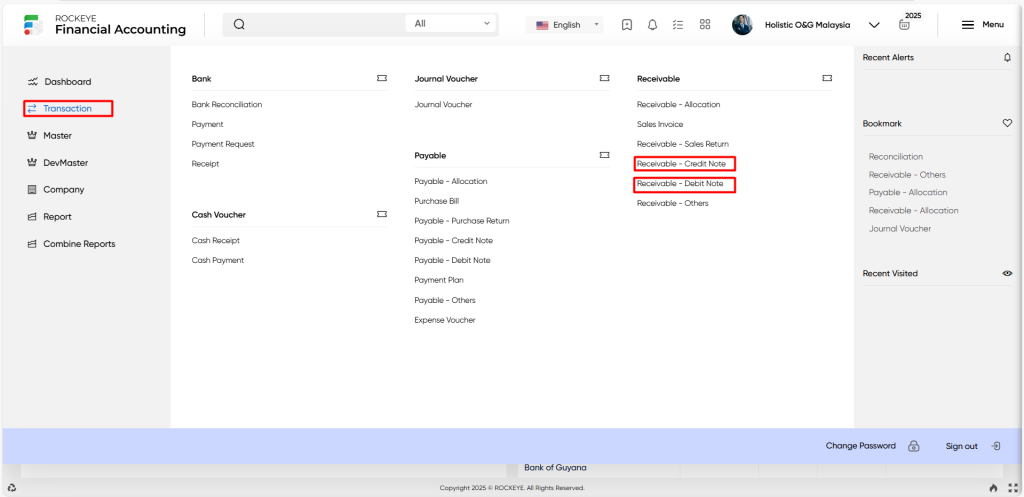
- Click on the transactions tab: The transactions can be accessed by clicking on the transactions tab on the side menu.
- Click on the receivable credit/debit note: The receivable credit/debit note can be accessed by clicking it from the receivable section.
Listing:
A receivable credit/debit note listing in a Financial Accounting system is a feature that provides a list of all receivable credit/debit notes.
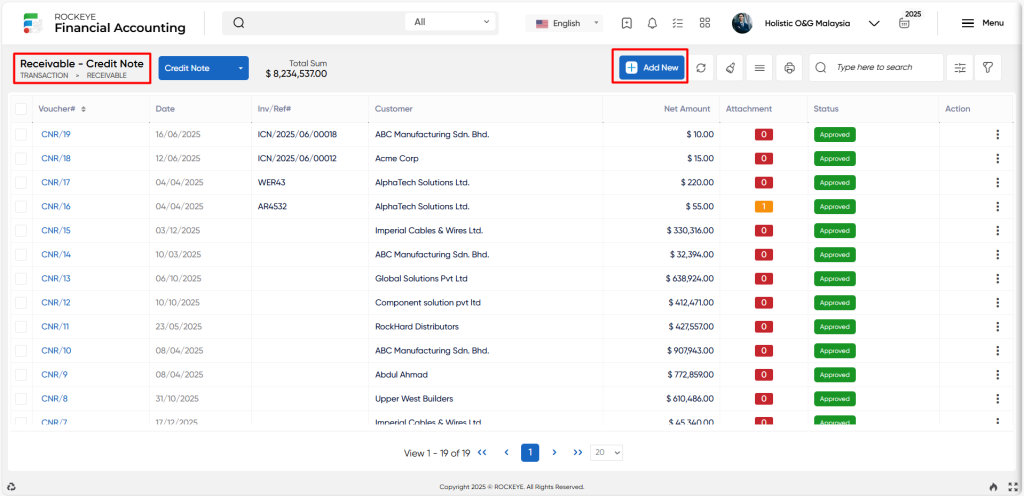
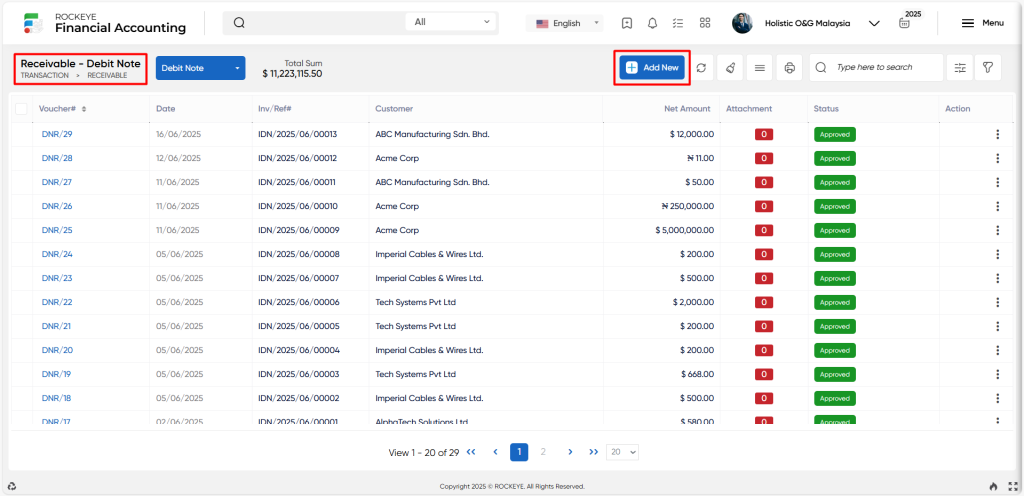
- Users can view the following information in the receivable credit or debit note listing
- Voucher and date
- Inv/ref and customer
- General ledger and currency
- Exchange rate and taxable
- Net amount and net amount (lc)
- Attachment, payment, and status
User can perform the following actions
- Add new: The “Add new” function allows you to create and add a new receivable credit/debit note to the system.
- Show all listing: The “Show all listing” function is to display and update a list or collection of receivable credit/debit notes within a system or interface.
- Clear cache: The “Clear cache” function clears the cached data associated with the receivable debit/credit note.
- More options: The “More options” function provides the user with more actions or functionalities.
- Print records: The “Print records” function allows users to print content by opening a print dialogue or displaying a preview of the content to be printed.
- Search & Quick Search: The “Quick Search” function refers to the option that allows for detailed searches based on multiple parameters, while the ” Search” option allows for short searches based on keywords or selective terms.
Recording & Update:
Add New Credit Note Or Debit Note:
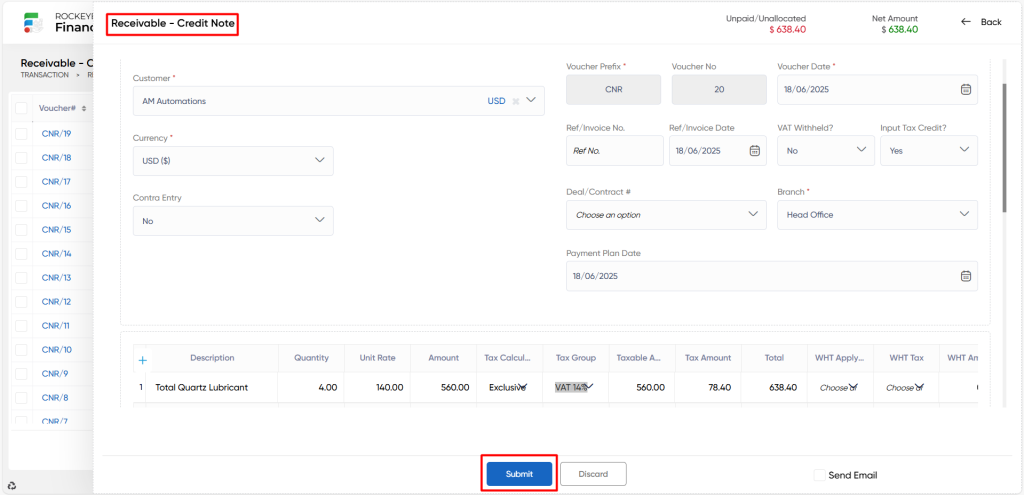
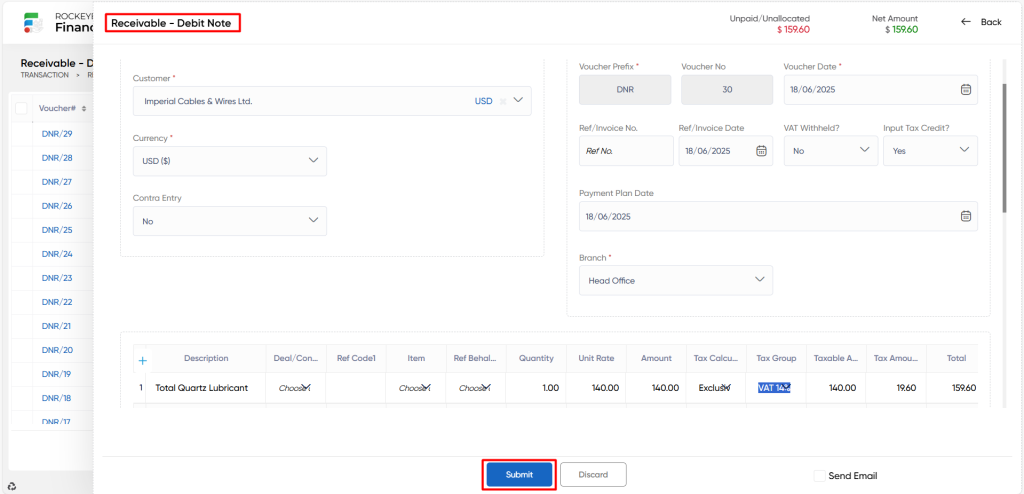
- Choose an option: The “Choose an option CoA” refers to the option where the user must select the chart of accounts with which this specific receivable debit/credit note is related.
- Customer: The “Customer” refers to the name or identity of the customer taking part in the transaction.
- Currency: The “Currency” refers to the type of money used in the transaction.
- Exchange rate and date: The “Exchange rate” refers to the exchange rate applied to convert the transaction amount from one currency to another, while the “Exchange date” refers to the day that the currency exchange rate was determined.
- Prefix voucher number and date: The “Prefix voucher number & date” refers to the reference number allocated to the payment transaction and the voucher date associated with the transaction.
- Billing address: The “Billing address” refers to the address to which the invoice or billing statement for the receivable transaction is mailed/sent.
- VAT withheld: The “VAT withheld” refers to the percentage or amount of VAT that is withheld from payments made.
- Ref date, no and Receipt date: The “Reference date and digit” refers to the field linked with the payment transaction, as well as the date refers to the date when the transaction’s receipt was issued.
- Deal master, Profit centre, Cost centre, Quantity, Unit rate, Amount, Tax calculation, Tax group, and so on: These terms refer to various details and attributes related to the receivable transaction, such as a transaction description, deal master information, allocation to profit centres or cost centres, quantity, unit rate, amount, tax calculation method, tax group, and other relevant information.
- Attachment, Narration, Tax breakup & Payment summary: These elements provide additional details and supporting information for the receivable transaction, such as attachments of relevant documents, narrations or comments, a tax breakup that shows tax components, and a payment-related information summary.
Users can perform the following actions
- Submit: The “Submit” function allows the user to submit the required information while creating a new receivable debit/credit note.
- Discard: The “Discard” function allows the user to cancel the submission of information provided at the time of creating a new receivable debit/credit note.